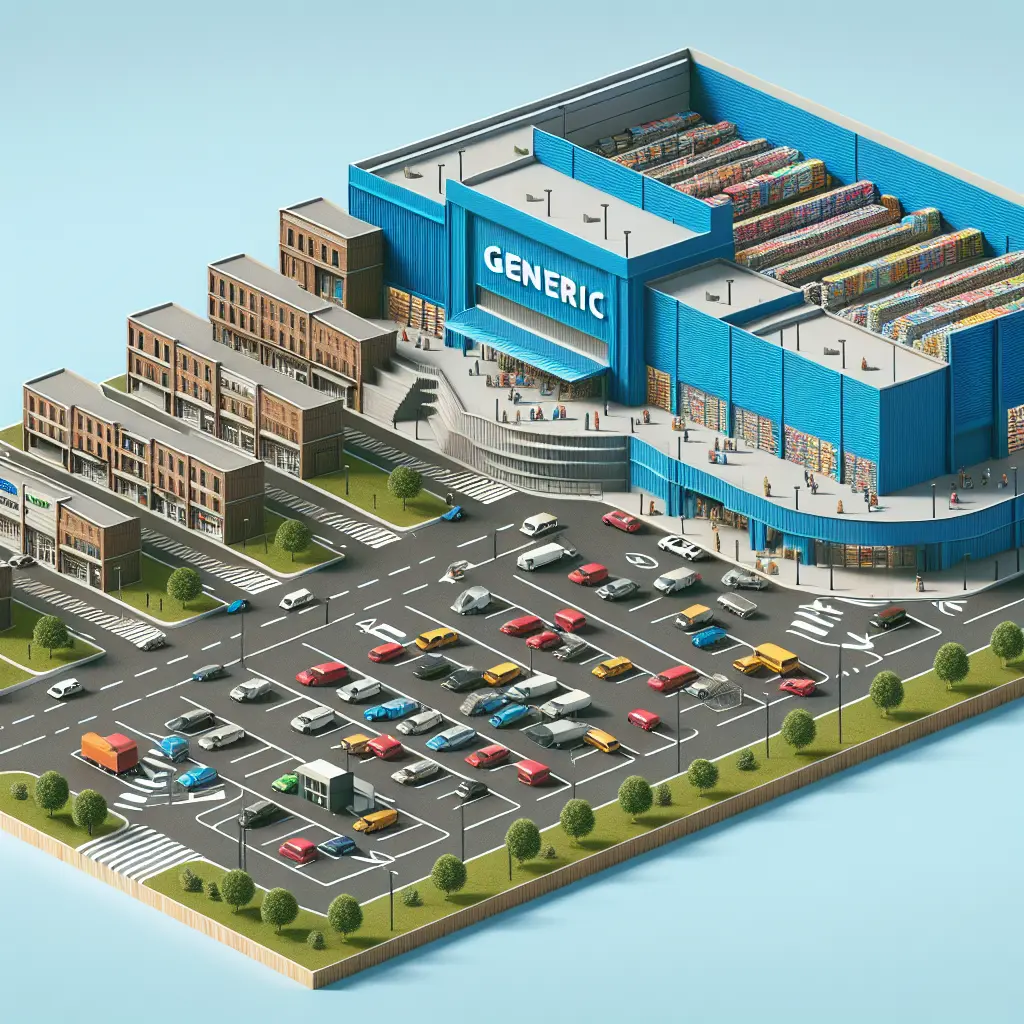
From its inception in 1962, Walmart has not only expanded its footprint globally but has also continually evolved its store design, adapting to changing consumer behaviors, technological advancements, and sustainability goals. This blog post will explore the Walmart store design evolution, highlighting key changes and innovations that have shaped the shopping experience.
The Beginnings and the History of Walmart Design
Walmart's journey began with a single store in Rogers, Arkansas. The early Walmart stores were quite basic, focusing more on functionality than aesthetics. This was in line with founder Sam Walton's vision of providing lower prices and great value, which required cost-saving measures in store design and layout.
Walmart Store Layout Changes and Design Strategy
Over the years, as Walmart began to dominate the retail sector, the company saw the need to create more organized and shopper-friendly stores. The Walmart store layout changes were aimed at enhancing customer experience while maximizing sales. Wider aisles, better signage, and more logical product groupings are just a few of the improvements made. The company's focus shifted toward creating a pleasant shopping environment that could compete with rising e-commerce platforms.
Walmart Architecture Evolution and Store Format Development
The architecture of Walmart stores has also seen significant transformations. Initially, stores had a warehouse-like feel with little emphasis on exterior aesthetics. Today, Walmart has adopted a more contemporary design with attention to landscaping, exterior finishes, and even incorporating local cultural elements in some locations. This change reflects Walmart’s design strategy to be more community-centric and visually appealing.
Innovations in Retail: Walmart Retail Innovation
Innovation has been at the heart of Walmart's strategy to stay competitive. The evolution of Walmart shopping experience includes the integration of technology in store designs. Self-checkout kiosks, digital price tags, and interactive displays have enhanced customer independence and convenience. Moreover, Walmart has leveraged technology to streamline operations, as seen in their high-tech refrigerated warehouses that support grocery dominance by ensuring fresh produce is readily available (source).
Sustainability in Design
Walmart sustainability in design is another critical aspect of their evolution. The retailer has committed to reducing its environmental footprint through energy-efficient building designs, reduced packaging, and incorporating renewable energy sources. These changes not only contribute to the planet’s health but also appeal to eco-conscious consumers.
Recent Updates and Deals
Keeping up with the latest trends and consumer needs, Walmart recently held an Anti-Prime Day sale, offering significant discounts on various products including tech devices, home appliances, and outdoor equipment (source). Notably, deals included Apple's AirTags at a record low price of $23.99 each and a 4-pack for just $75 (source), attracting tech enthusiasts looking for smart solutions to keep track of their belongings.
Moreover, Walmart’s ongoing commitment to affordability was highlighted with over $300 savings on a TCL 4K TV, making advanced technology accessible at lower prices (source). This approach not only drives sales but also enhances customer satisfaction by making premium products more affordable.
Walmart’s Design Impact on Employees and Community
The impact of Walmart’s evolving store design extends beyond just customer experience; it also affects employees and the communities they serve. A remote worker relocating to Walmart’s headquarters expressed excitement about working in an innovative environment but stressed about the relocation timeline (source). This underscores the importance of efficient workspace design in employee satisfaction and productivity.
Challenges Along the Way
Despite these advancements, challenges such as maintaining consistency across numerous locations and integrating new technologies without disrupting the shopping experience remain. However, Walmart continues to adapt and address these issues as part of its broader design strategy.
Conclusion
In conclusion, the evolution of Walmart's store design from simple layouts to sophisticated, sustainable, and technologically integrated formats showcases its commitment to improving the shopping experience while being mindful of environmental impacts. As Walmart continues to innovate and adapt, it remains a key player in setting retail trends that others follow.
Thank you for joining me on this exploration of Walmart's design evolution. As we look towards the future, it’s clear that Walmart will continue to innovate not just for better business outcomes but for a better world.
Isla Robbins